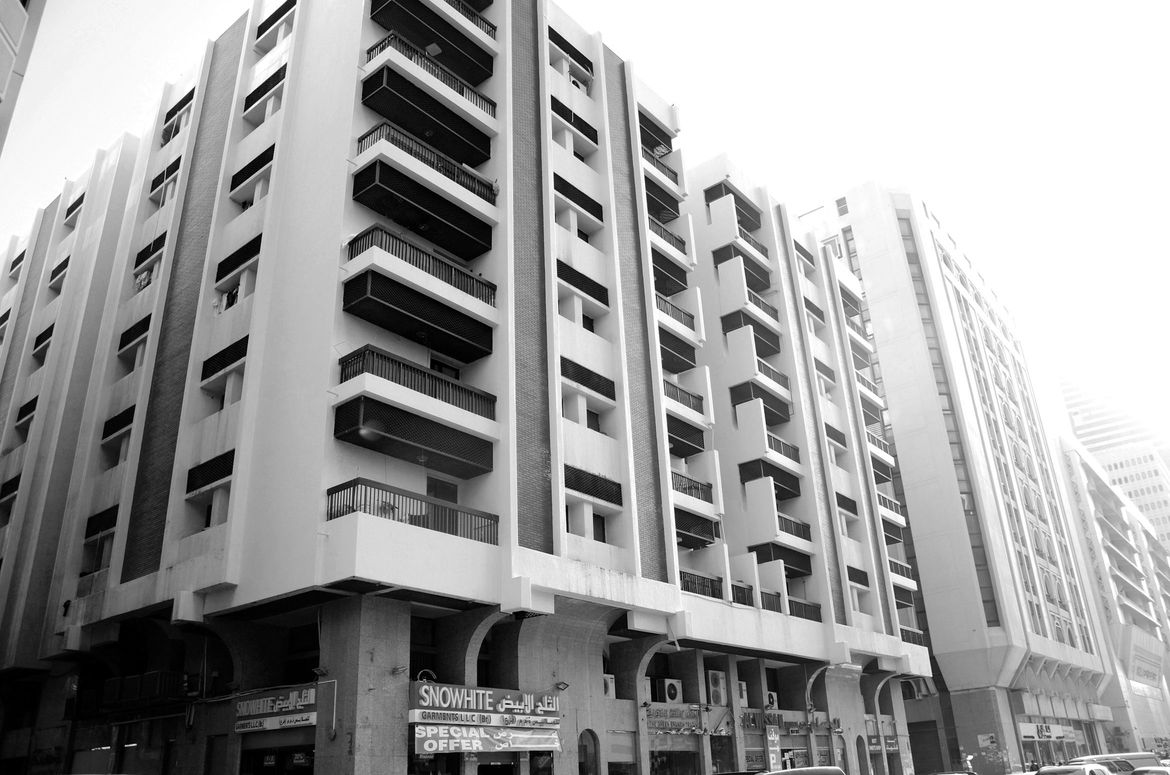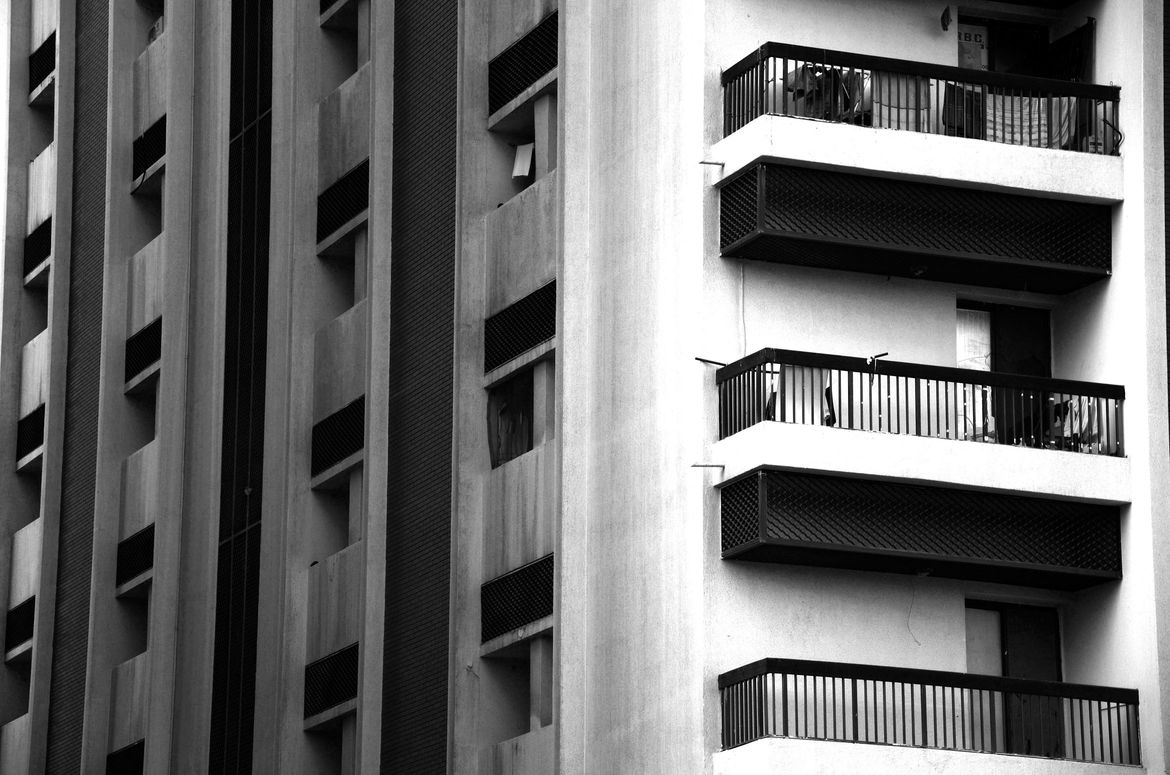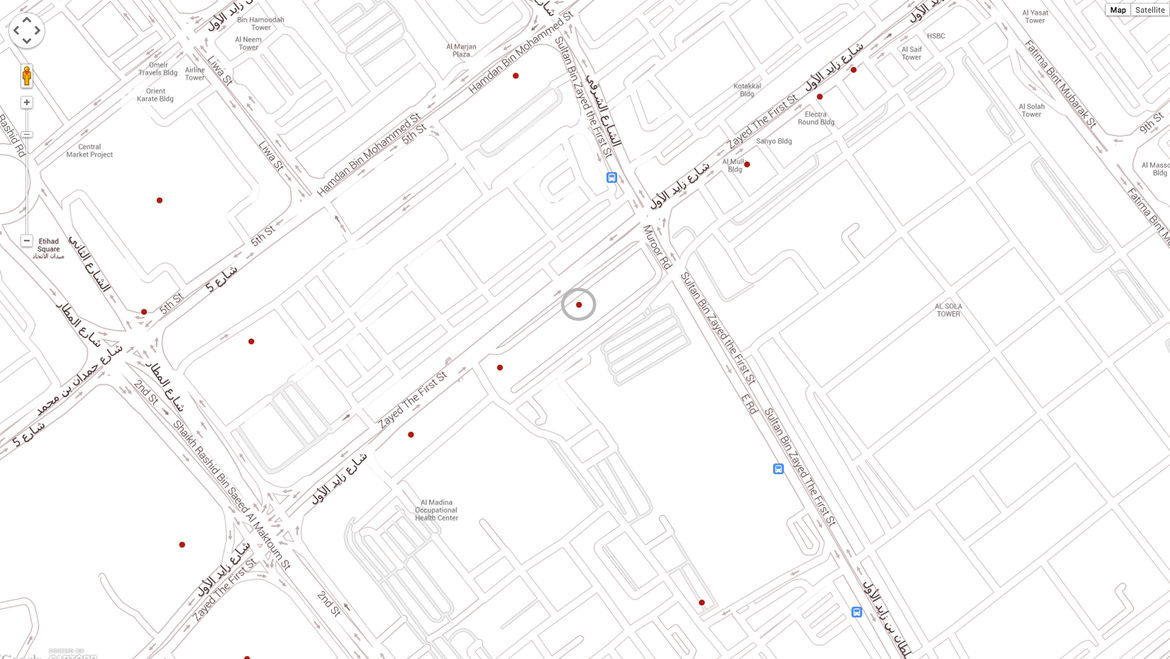15. Snowhite Building 1980s
Architect Unknown
Electra Street/Sheikh Zayed the First Street
Bus Routes 007, 044, 040, 052, 032, 056
This low-rise, mixed-use, modernist building stands out from its plain, glass-covered neighbors. It is difficult to find information about the place: there does not seem to be a manager, and the owner is absent. According to one resident, who moved in in 1987, the building was built at some time in the 1980s. I call it the "Snowhite Building," after one of the shops on the ground level.
What sets the Snowhite Building apart is its aesthetic design that articulates two completely different sides: a symmetrical three-block structure on the front, and a box-like shape around a masonry wall on the side. The front boasts a brick and concrete construction, embellished by four symmetrical redbrick vertical lines that underline the windows. A cast-in-place faux marble base supports the wrap-around concrete body of the building, which ends up on a flat roof. The front is made of two monolithic concrete blocks symmetrically reflected around a smaller central block.
Walking around to the side, one is bound to notice the vertical strip of windows spreading in the middle. It seems out of place. This vertical row not only divides the building into two wings, but also makes sure that there is enough light falling to the staircase in its center. The building is adorned with geometric forms that do not appear to serve any purpose. It exemplifies the idea that there "should be no frontiers between the applied arts and the sculpture or painting - everything should be one thing: architecture." [1]


